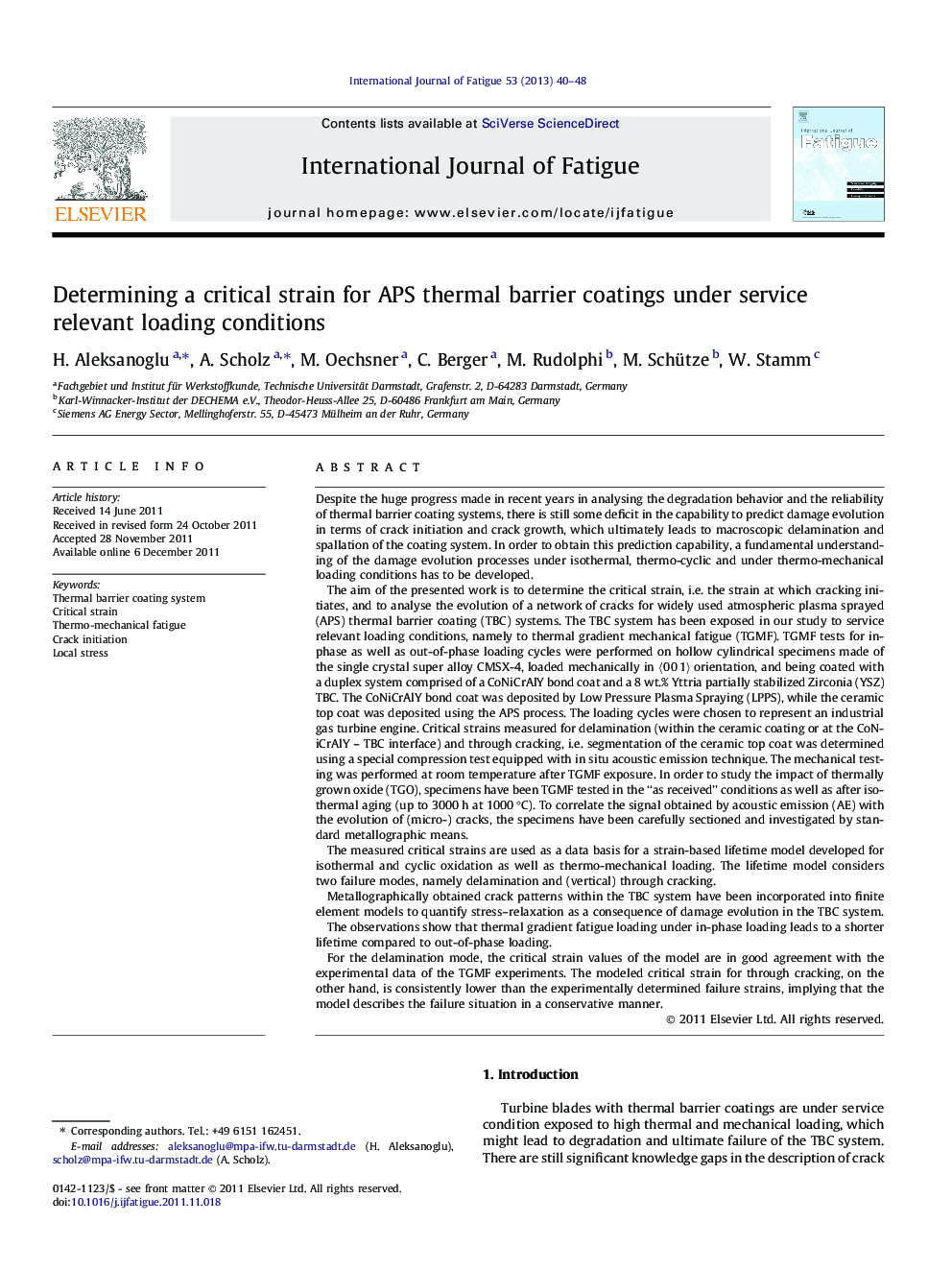| کد مقاله | کد نشریه | سال انتشار | مقاله انگلیسی | نسخه تمام متن |
|---|---|---|---|---|
| 777677 | 1463779 | 2013 | 9 صفحه PDF | دانلود رایگان |

Despite the huge progress made in recent years in analysing the degradation behavior and the reliability of thermal barrier coating systems, there is still some deficit in the capability to predict damage evolution in terms of crack initiation and crack growth, which ultimately leads to macroscopic delamination and spallation of the coating system. In order to obtain this prediction capability, a fundamental understanding of the damage evolution processes under isothermal, thermo-cyclic and under thermo-mechanical loading conditions has to be developed.The aim of the presented work is to determine the critical strain, i.e. the strain at which cracking initiates, and to analyse the evolution of a network of cracks for widely used atmospheric plasma sprayed (APS) thermal barrier coating (TBC) systems. The TBC system has been exposed in our study to service relevant loading conditions, namely to thermal gradient mechanical fatigue (TGMF). TGMF tests for in-phase as well as out-of-phase loading cycles were performed on hollow cylindrical specimens made of the single crystal super alloy CMSX-4, loaded mechanically in 〈0 0 1〉 orientation, and being coated with a duplex system comprised of a CoNiCrAlY bond coat and a 8 wt.% Yttria partially stabilized Zirconia (YSZ) TBC. The CoNiCrAlY bond coat was deposited by Low Pressure Plasma Spraying (LPPS), while the ceramic top coat was deposited using the APS process. The loading cycles were chosen to represent an industrial gas turbine engine. Critical strains measured for delamination (within the ceramic coating or at the CoNiCrAlY – TBC interface) and through cracking, i.e. segmentation of the ceramic top coat was determined using a special compression test equipped with in situ acoustic emission technique. The mechanical testing was performed at room temperature after TGMF exposure. In order to study the impact of thermally grown oxide (TGO), specimens have been TGMF tested in the “as received” conditions as well as after isothermal aging (up to 3000 h at 1000 °C). To correlate the signal obtained by acoustic emission (AE) with the evolution of (micro-) cracks, the specimens have been carefully sectioned and investigated by standard metallographic means.The measured critical strains are used as a data basis for a strain-based lifetime model developed for isothermal and cyclic oxidation as well as thermo-mechanical loading. The lifetime model considers two failure modes, namely delamination and (vertical) through cracking.Metallographically obtained crack patterns within the TBC system have been incorporated into finite element models to quantify stress–relaxation as a consequence of damage evolution in the TBC system.The observations show that thermal gradient fatigue loading under in-phase loading leads to a shorter lifetime compared to out-of-phase loading.For the delamination mode, the critical strain values of the model are in good agreement with the experimental data of the TGMF experiments. The modeled critical strain for through cracking, on the other hand, is consistently lower than the experimentally determined failure strains, implying that the model describes the failure situation in a conservative manner.
Journal: International Journal of Fatigue - Volume 53, August 2013, Pages 40–48